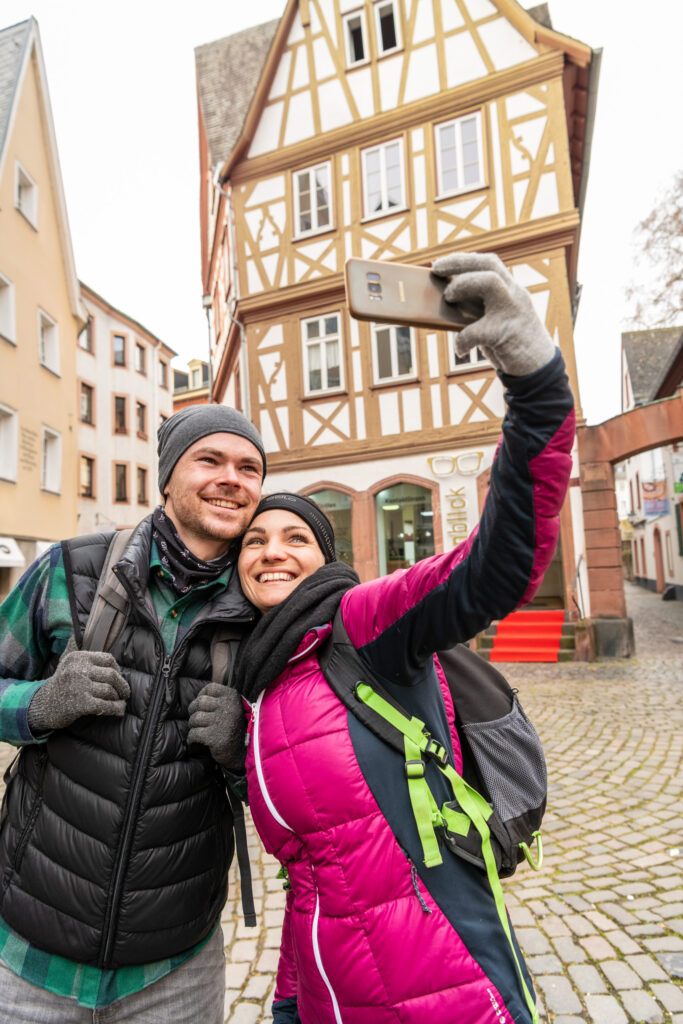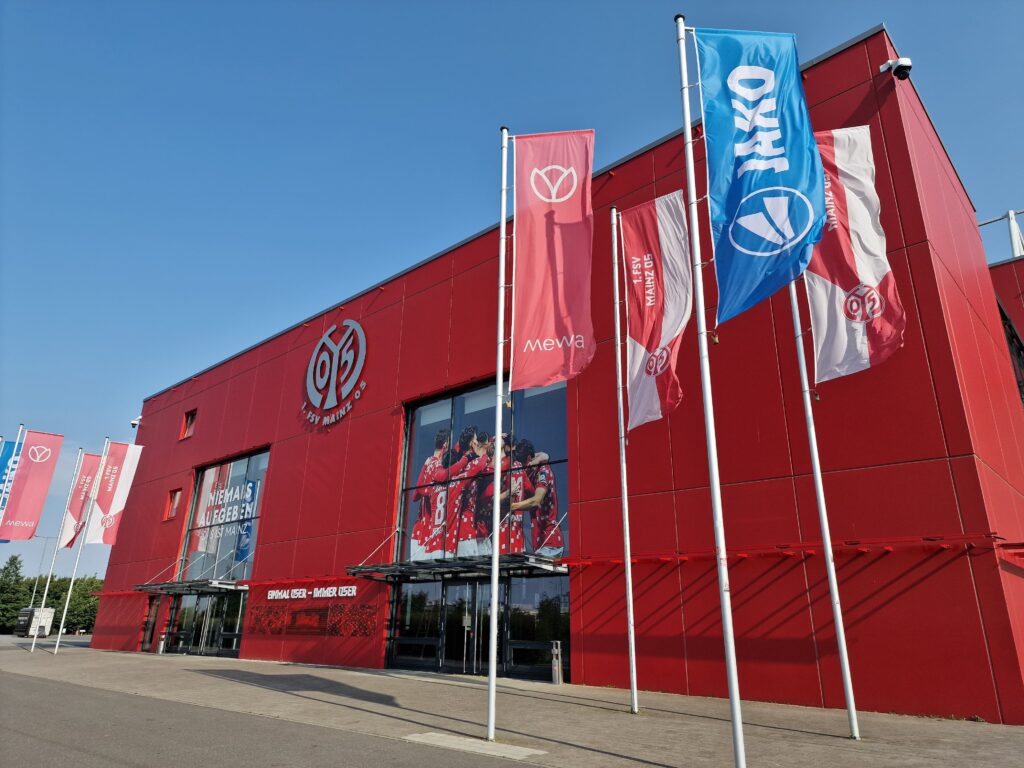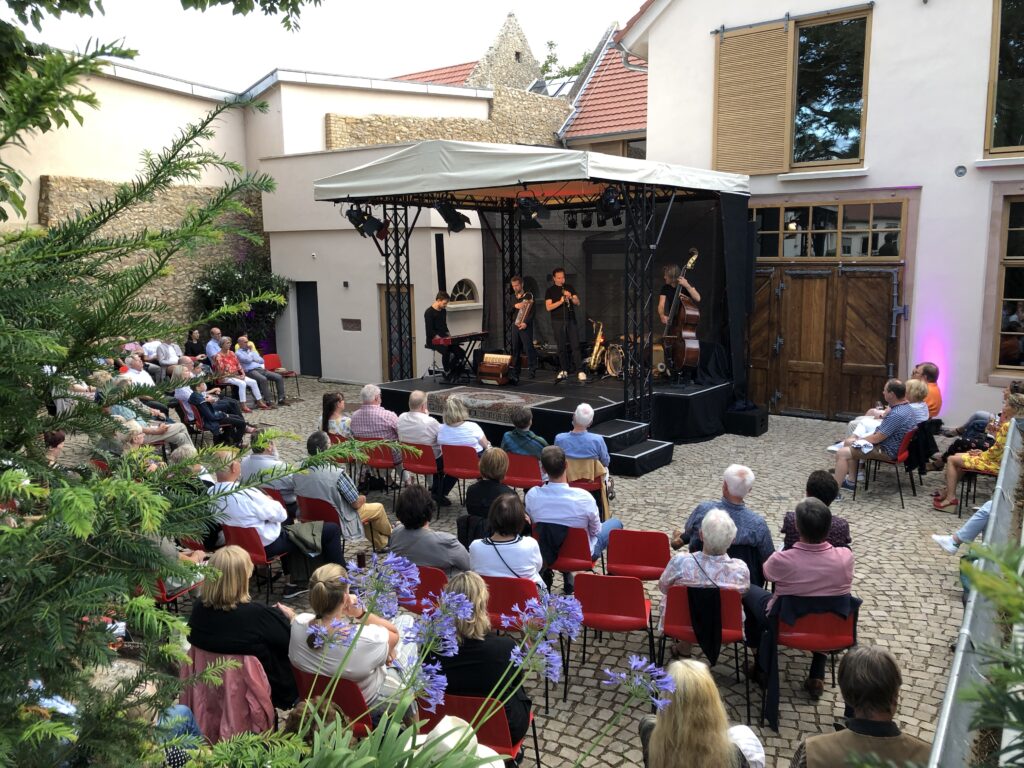This article was published on July 10, 2024 and updated on May 28, 2025.
With a beguine through the historic old town of Oppenheim; on a herb hunt in Eckelsheim to make a bouquet of herbs; or with a smartphone on a photo walk through Mainz: there are many unusual ways to discover Rheinhessen as part of a guided tour. Marina Noble took a closer look at three of these unusual offers. These guided tours, explorations and workshops have one thing in common: you are guaranteed to take home new information, experiences and aha moments. It just so happens that there are always strong women in action.
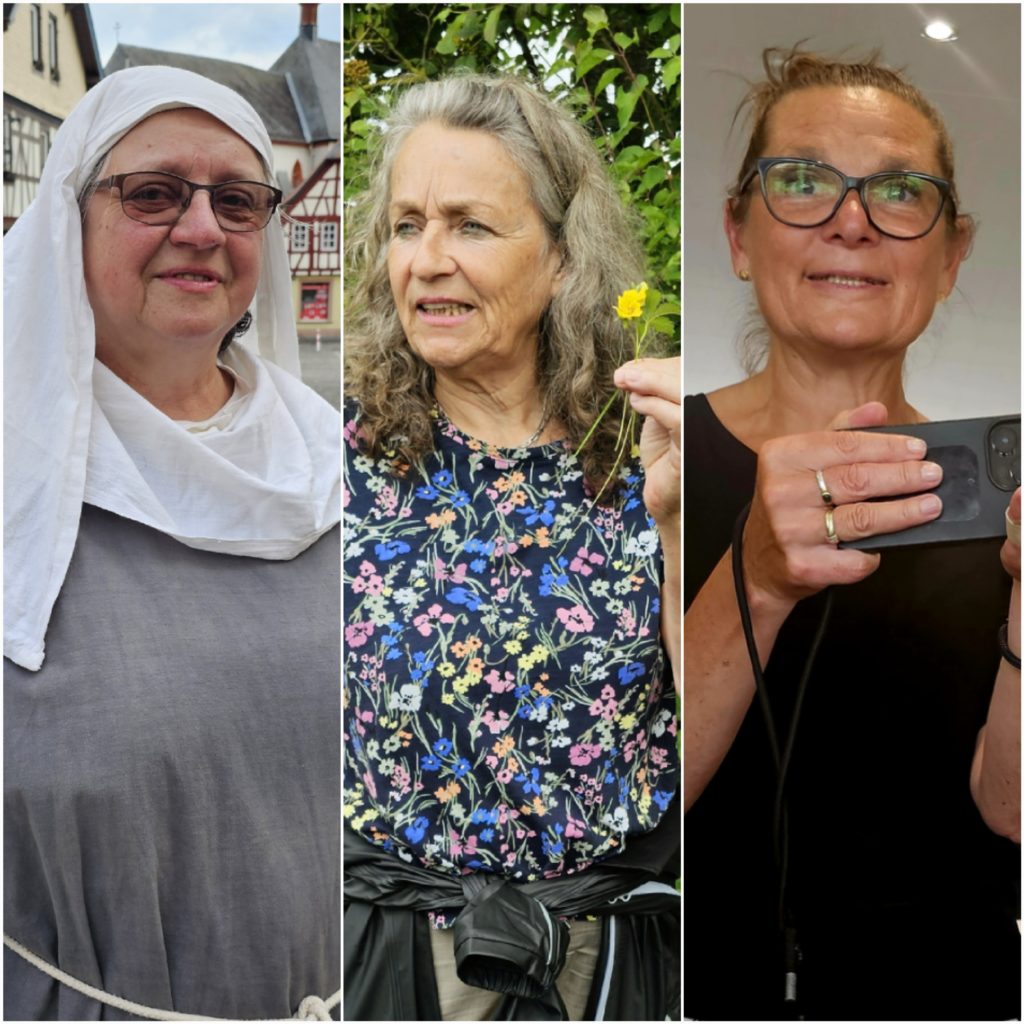
Modern women in the Middle Ages: Beguine tour in Oppenheim
The woman in the long, beige-grey robe greets us: "I am Beguine Elisabeth". She wears a hood and veil on her head. A sprig of lemon balm and peppermint twine around her belt. In the role of a beguine, Elisabeth takes us on a special tour through the historic old town of the pretty town of Oppenheim. The representative of what was probably the first women's movement in history shares her life and work in the Middle Ages with us. And we learn: What moved people at that time? How did they explain the world to themselves?
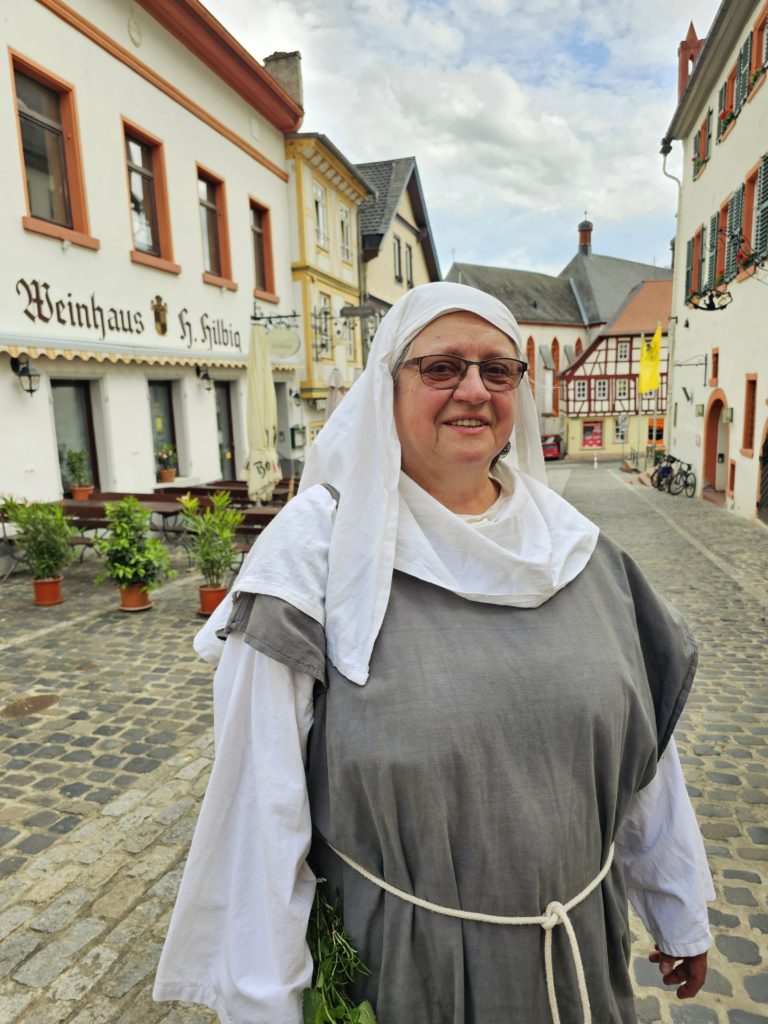
Back then, women only had two options: Either marry or join a convent order as a nun. Beguines wanted neither, but rather to lead a self-determined life. Thus, from the 12th century onwards, the alternative residential and living communities of the beguine houses emerged. Three of these existed in Oppenheim. The women provided for their own livelihood. They were often the social workers of their time. Others worked in education or made handicrafts such as embroidery.

Nursing is an important part of their work. To this end, the beguines work together with the Franciscan monks. This is why one of the first stops on the tour is St. Bartholomew's Church, built by this mendicant order, not far from Oppenheim's market square. We learn about the "killers" of the Middle Ages: leprosy, plague, cholera and the Antonius fire. These treacherous diseases were the cause of death for one in two of the population at the time. People were looking for explanations, such as the brain producing too much mucus or the bodily fluids getting mixed up.
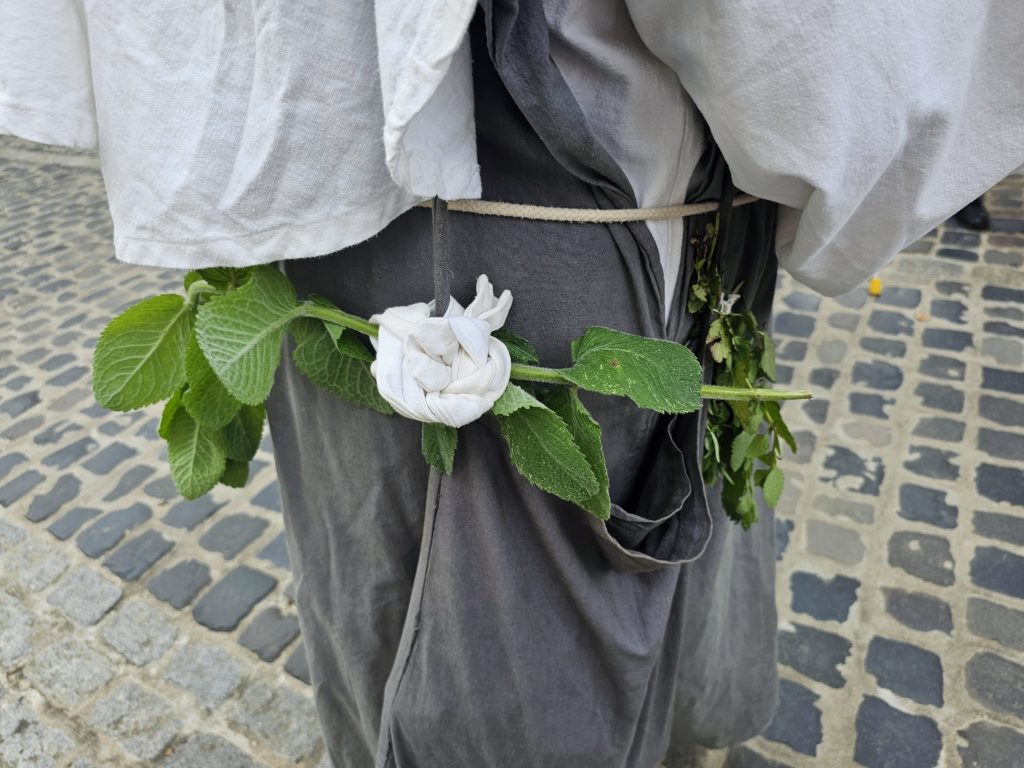
Elisabeth tells how the Beguines became experts in medicinal plants. They are the only means of relief and healing. "What herbs can't cure, death will" was the thinking at the time. The women also provided important services when it came to assisting the dying and burial. We learn details about this that we can no longer imagine today.
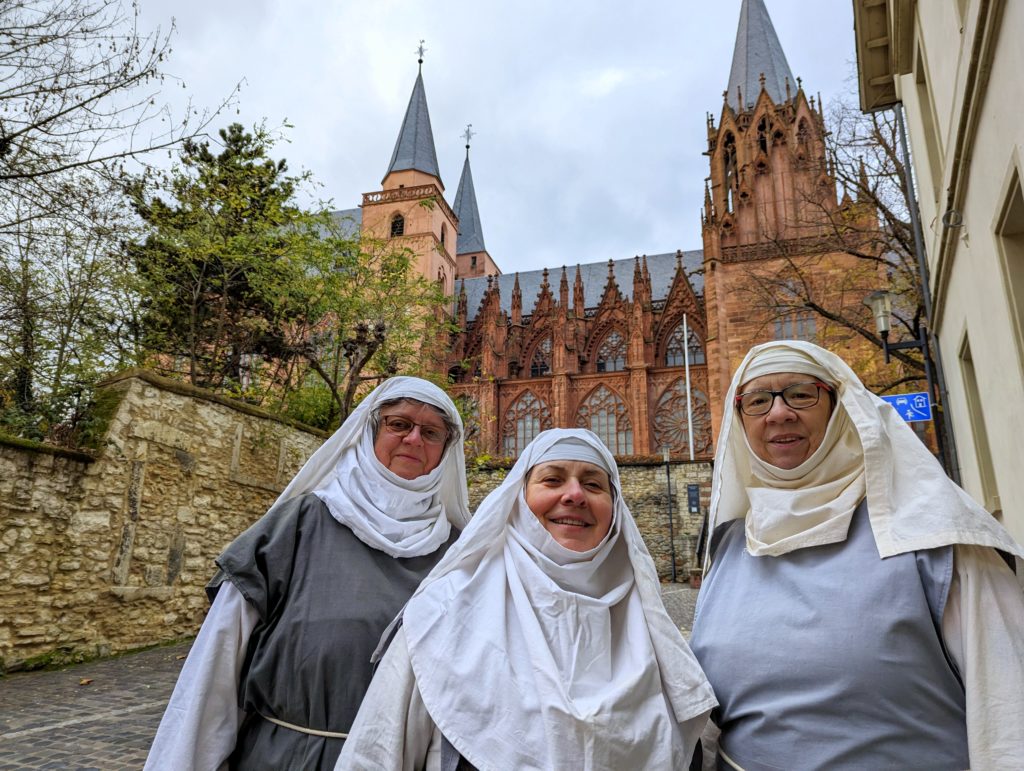
During their tours of Oppenheim, the three "reigning Beguines" Ulla Eisenhardt, Ulrike Franz and Dr. Helga Schmadel also provide insights into important sights in the town of the Toad Fountain. These include the cellar labyrinth extending up to five storeys below the old town, the ruins of Landskron Castle high above or the mighty building of St. Catherine's Church.
The costume tours, which last around 90 minutes, can be booked for groups of up to 20 people via the Website of the town of Oppenheim.
Primal powers in a bouquet of herbs: guided tour for the summer solstice
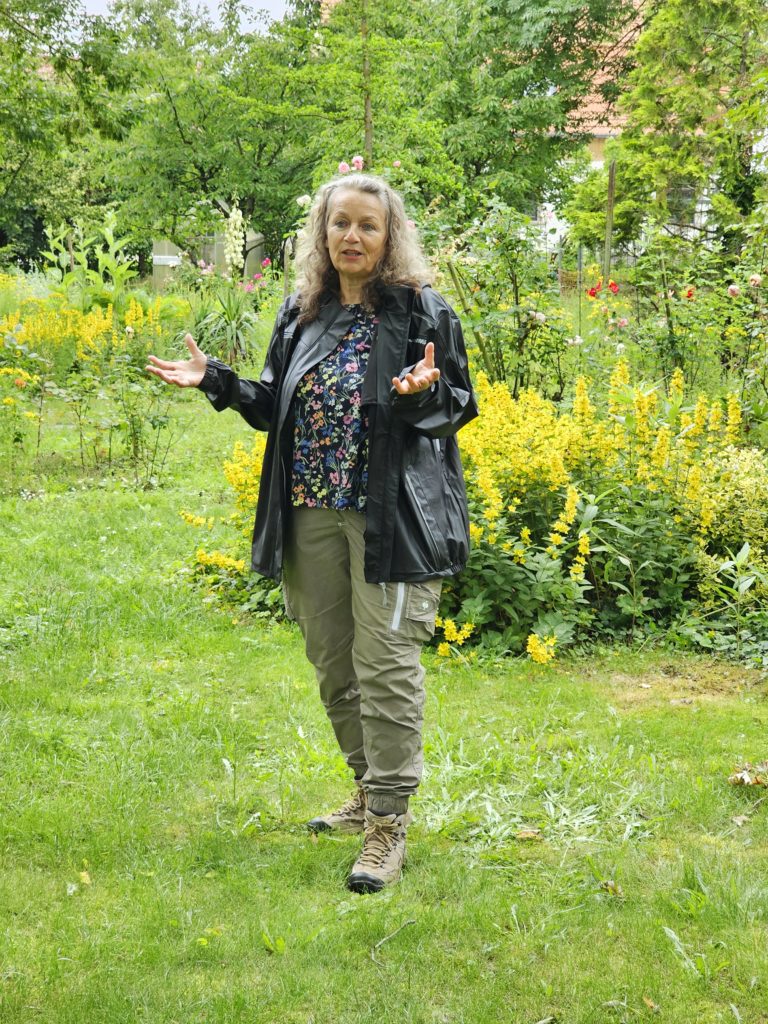
Christina Mann from the Herbula Herbal School in Eckelsheim delves deep into the world of plants at the "Herbal event for the summer solstice". The expert and ethnobotanist will focus on the significance attributed to plants. For people in the past, they had magical significance for protection, purification, health and wisdom. Our ancestors bundled this energy with a bouquet of wild herbs to preserve it for a year. On our guided tour, we learn more and take our own bouquet of power home with us.
Christina Mann puts us in the mood in her splendidly blooming garden: People used to live their lives according to the light and the sun, of course - there was no electricity. That's why they celebrated the longest day of the year: the summer solstice. This is when most herbs bloom or are in full bloom - so it's also an ideal time for the special herb event.
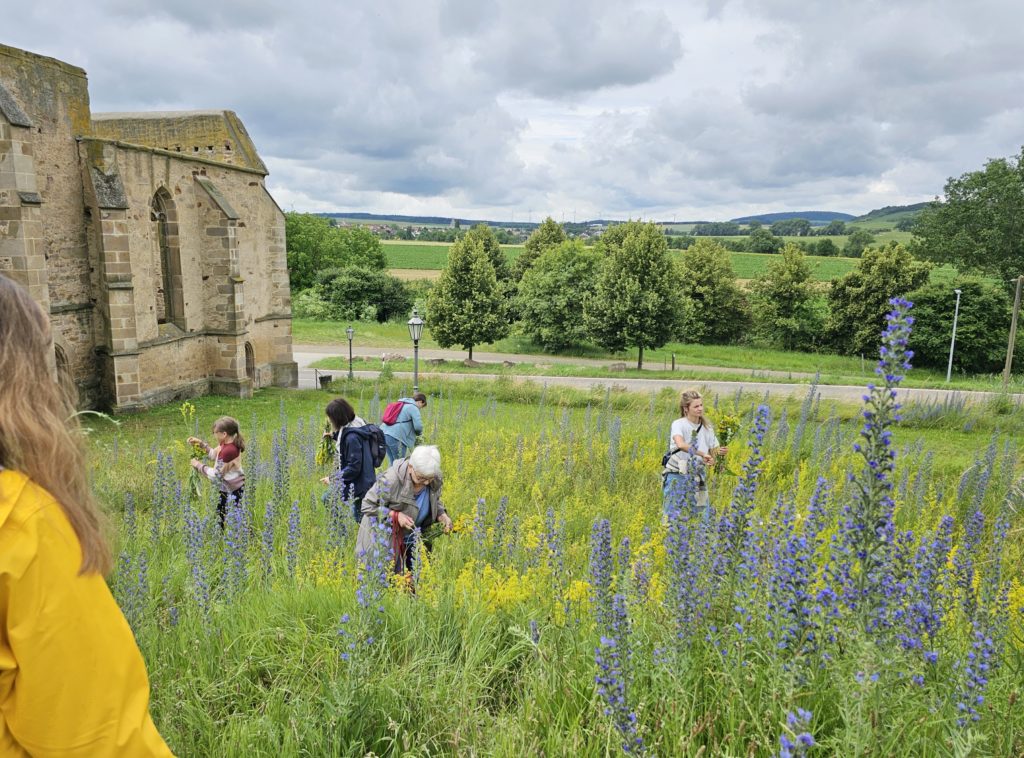
We learn that three used to be considered a magic number. A bouquet should therefore have three, nine, twelve or any other three components. But Christina Mann makes it clear: "Today it's all about well-being and having fun. Even a large, colorful bouquet is perfectly fine". The most important herbs are again three: mugwort, St. John's wort and plantain. The expert shows us the plants and explains: "St. John's wort with its small, yellow flowers stands for light. Herbaceous green, mugwort symbolizes the power of the earth and life. The seeds of the plantain are blown away by the wind - showing resilience

Each member of the group picks the stems that appeal to them - in the garden and then on a hike. Christina Mann repeatedly points out special plants: The wild marjoram stands for joy; the rue brings strength, today we say power; the thistle is the plant of love. The children in the group are thrilled to learn that elves live in the bluebells. Our guide also has lots of stories to tell: the gods had turned a young woman who was desperately searching for her dead lover into a chicory with its pretty blue flowers, and she is still waiting by the path today.
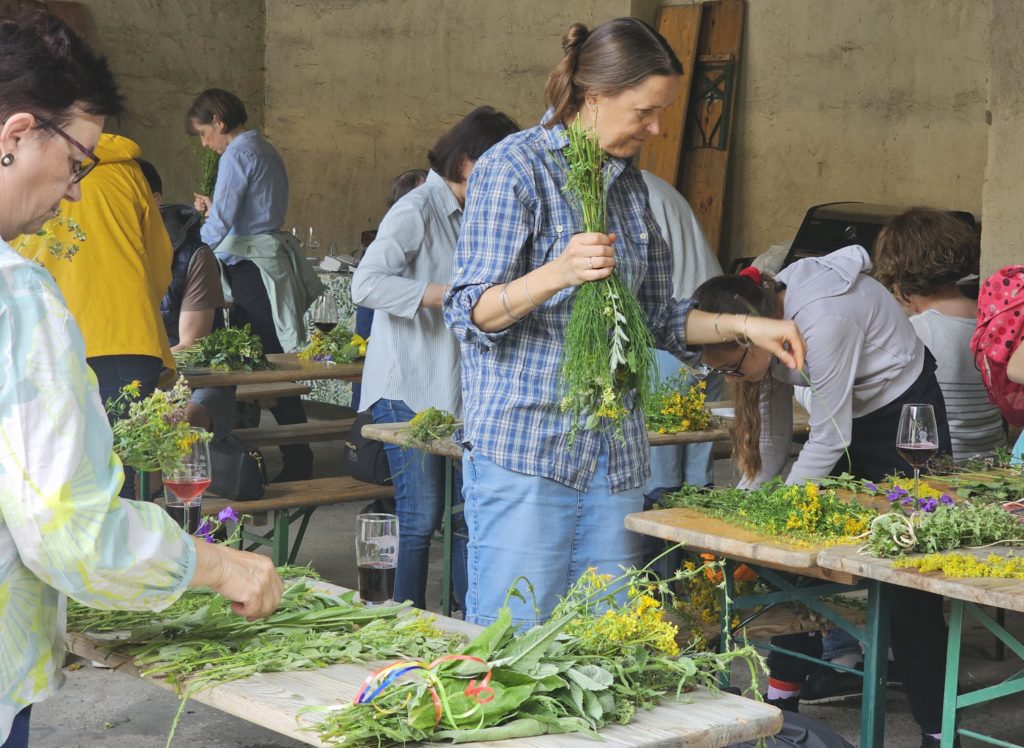
The route takes you past the ruins of the Beller church and along the beach path of the senses. Back at the herb school, there are refreshments: a rosé wine or grape juice from our own vineyard to quench your thirst and a delicious herb quiche to satisfy your hunger. Our bouquets are given the finishing touch with ribbons. Again, the color has a meaning: blue for energy and creativity; red for warmth; yellow for wisdom; or green for grounding. Hung upside down in the air, the bouquet will dry and last for a whole year. Then our ancestors burned it and returned it to the earth.
Further information about the offer on the Website of the herbal school.
New perspectives for smartphone photos: Photo walk through Mainz
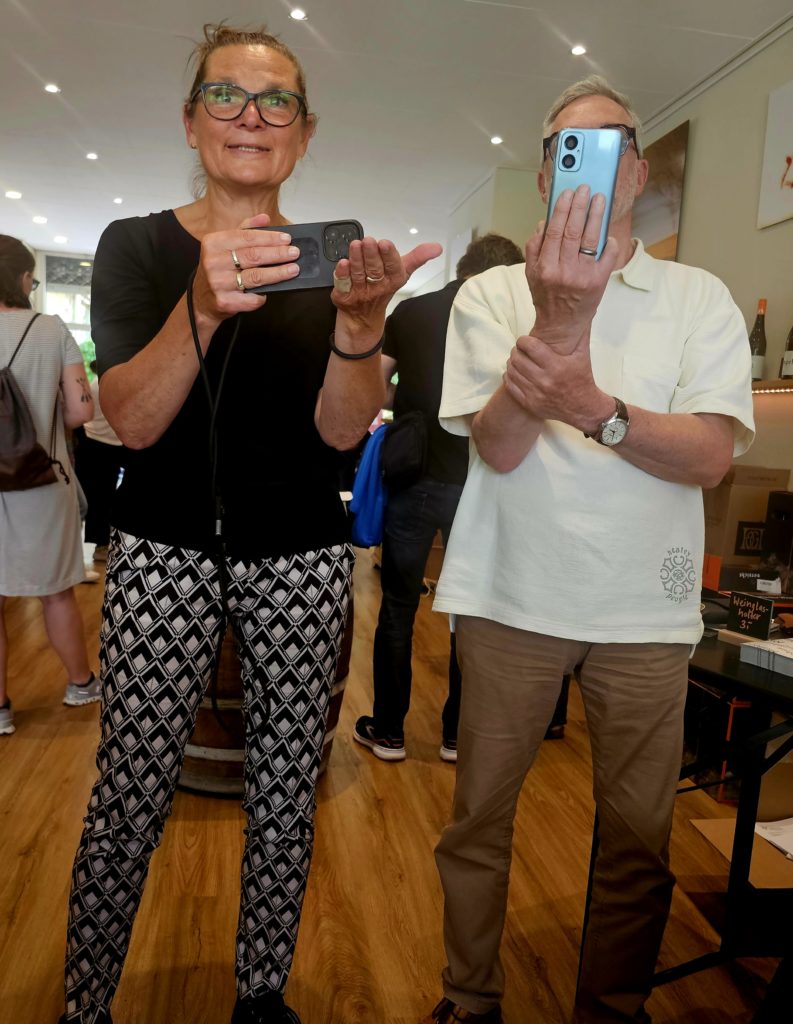
The two-hour photo walk through Mainz is all about a device that has become an integral part of our modern lives. It promises five tips for taking photos with your smartphone. To get straight to the point: There will be more than 50 valuable tips and aha moments - even for people who think they already know their way around. It all starts with a sparkling warm-up drink, a glass of sparkling wine, at the meeting point for the small group: the JAoderWEIN store run by organizers Thorsten and Volker Griebel from WineWalk Mainz.
Professional photographer and all-rounder Marion Rockstroh-Kruft will act as tour guide. She learned her craft at the New York Institute of Photography, among others. Her Rheinhessen landscape photos, which adorn the walls, are proof of her practical skills. Here in the store, we start with a bit of theory and the use of the smartphone. Because it is "our toolbox", as Marion calls it.
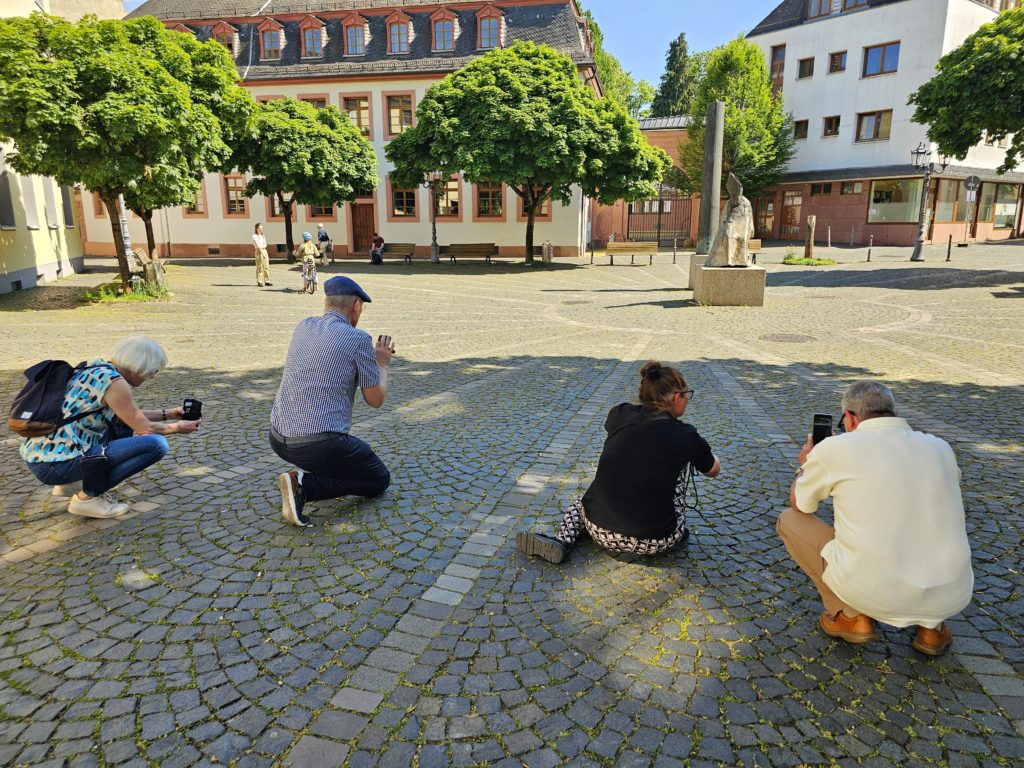
She patiently explains and shows each individual, whether Android or i-phone (not so easy with the different models): Where can I find what on my device? What basic settings and modes are there? Ahhh, you can also use the volume down button on the side - ideal for selfies. Three fingers on the back, thumb on the right and little finger on the left, so the phone sits firmly in your hand.
Marion's explanations of spatial vision, which has changed over the centuries and varies from culture to culture, are also fascinating. People don't read from left to right everywhere in the world. We also learn how to direct our gaze to a main motif and why the light is particularly beautiful at the blue hour.
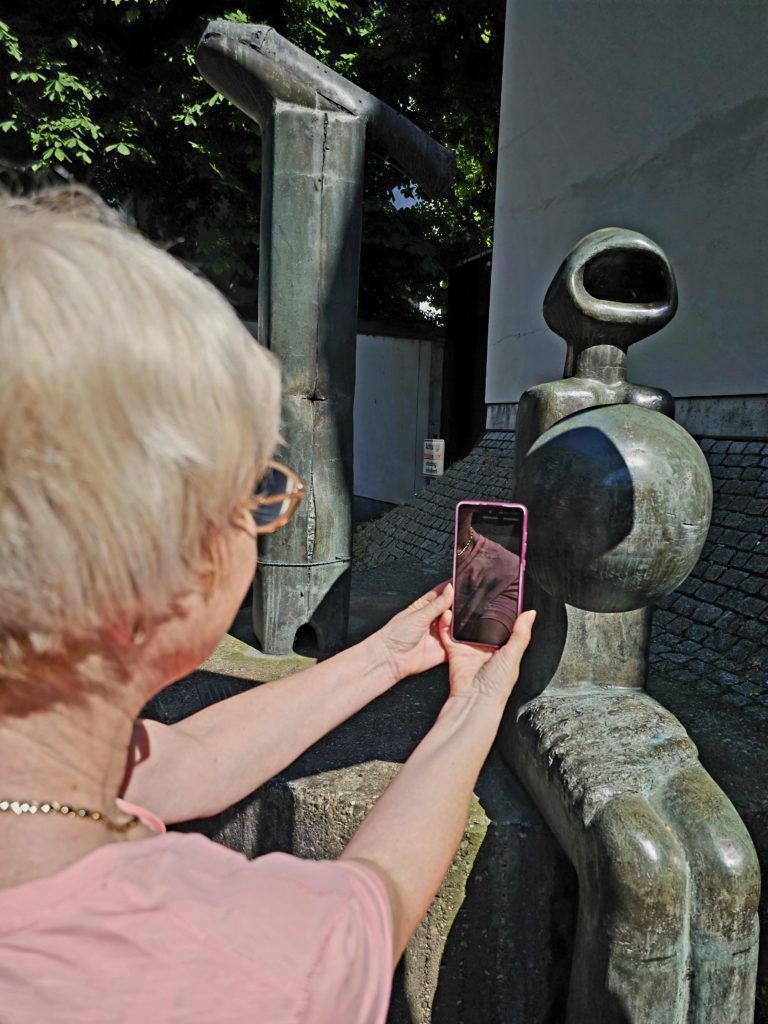
Then, for the second half, it's time to put it into practice: we practise changing our perspective on the ball court. There are simple tricks, such as simply turning the cell phone around. We play with light and shadow on the standing and sitting bronze figure of the "mutant guardian couple". A good motif for trying out different image compositions is the carnival fountain with its more than 200 figures on Schillerplatz. One of Marion's tips for higher image quality is not to zoom by dragging, but by using the focal length. Or, even more simply, "with your feet", i.e. get closer.
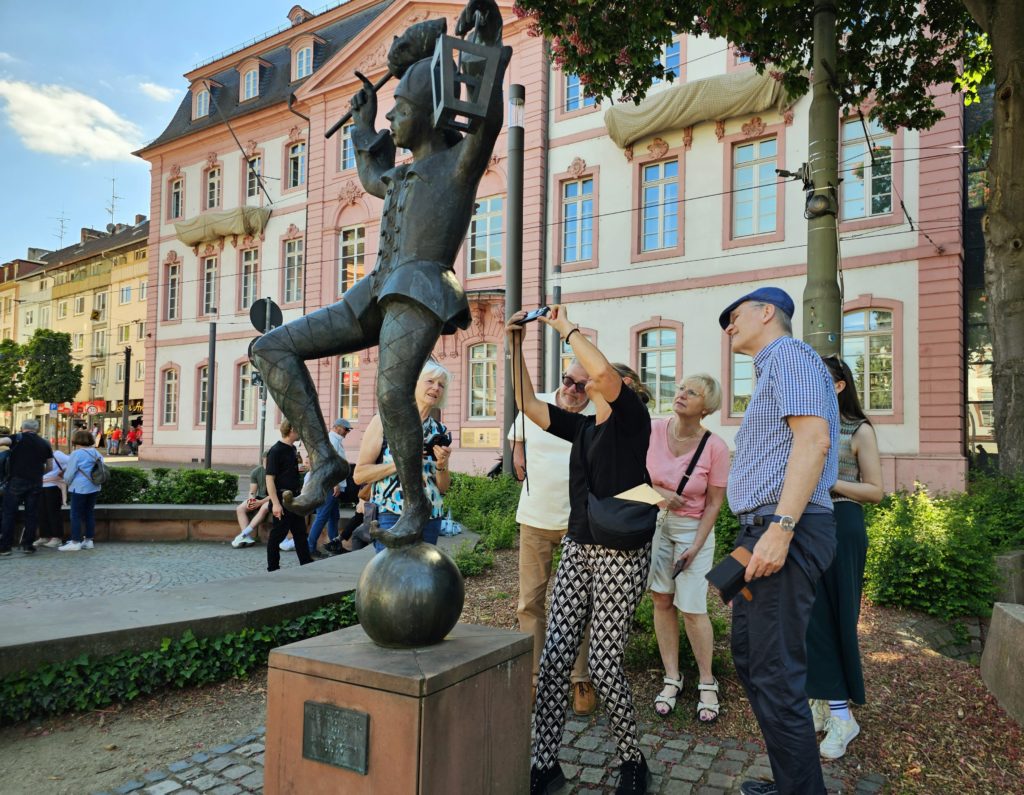
Marion is also a certified wine expert. So she concludes by drawing a comparison: what do wine and photography have in common? The answer: both are ultimately a matter of taste ... and can be addictive. Yes, especially if you can get as much out of your smartphone as you can after the workshop. Further dates for 2024 and information on the photo walk, which can also be booked exclusively as a group, can be found on the website of WineWalk Mainz.
You can also find the photo walk offer on the Rheinhessen page, with the bookable daily offers.

